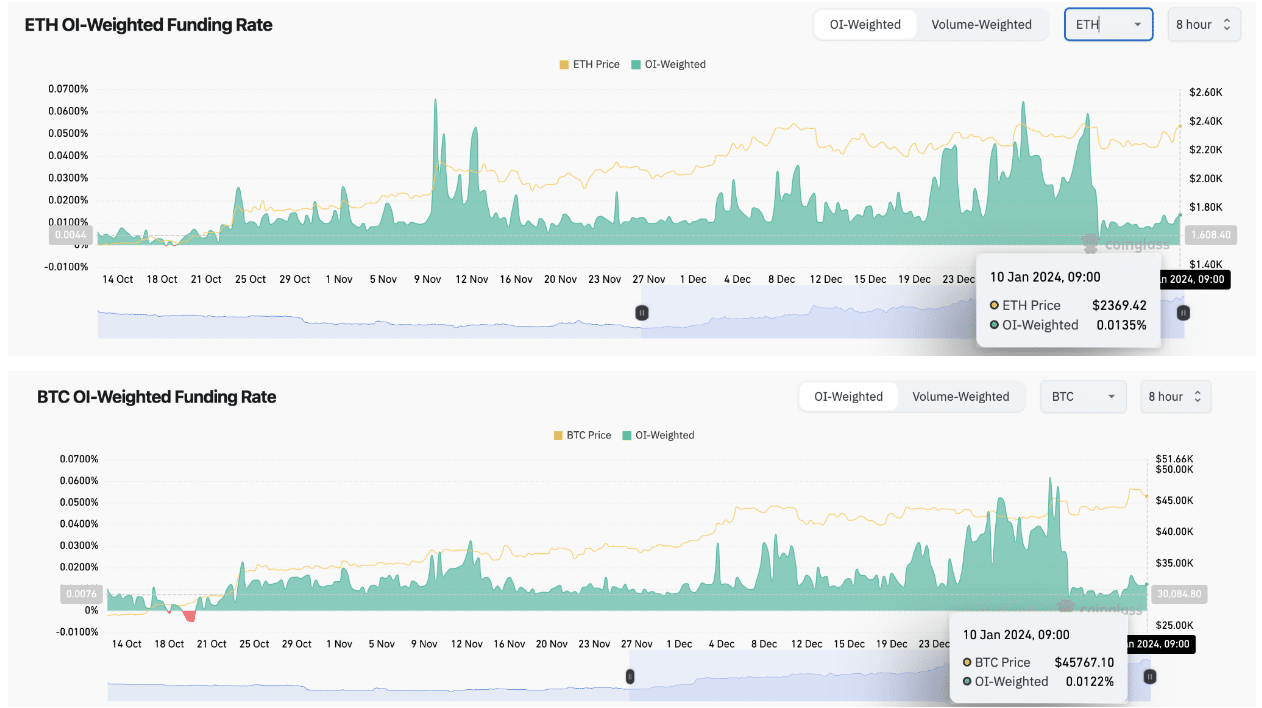Bitcoin Or Ethereum Long-term Investment Insights
Bitcoin or Ethereum long-term, the debate continues as investors seek to understand which cryptocurrency holds the most promise for their portfolios. With the ever-evolving landscape of digital currencies, both Bitcoin and Ethereum present unique advantages and challenges that can shape financial futures.
The nuances between these two leading cryptocurrencies are significant, extending beyond basic trading to the technology, market trends, and real-world applications that define their potential. As we delve into this discussion, we will explore how each asset has performed historically and what strategies can be employed for long-term success.
Understanding Bitcoin and Ethereum

Bitcoin and Ethereum stand as two of the most prominent cryptocurrencies in the digital landscape. While they share some similarities, their fundamental differences shape their use cases, technology, and market behavior. Bitcoin, created in 2009 by an anonymous entity known as Satoshi Nakamoto, primarily serves as a decentralized digital currency and a store of value. In contrast, Ethereum, launched in 2015 by Vitalik Buterin and others, is a decentralized platform that enables developers to build and deploy smart contracts and decentralized applications (dApps).The technology behind Bitcoin and Ethereum is rooted in blockchain, but they utilize different consensus mechanisms and structures.
Bitcoin employs a Proof of Work (PoW) system that requires miners to solve complex mathematical problems to validate transactions. This process is energy-intensive but has proven to be secure. On the other hand, Ethereum has transitioned to a Proof of Stake (PoS) mechanism with Ethereum 2.0, allowing validators to confirm transactions based on the number of coins they hold and are willing to “stake.” This shift aims to enhance scalability and reduce energy consumption.Over the past decade, the price movements of both cryptocurrencies have been nothing short of dramatic.
Bitcoin reached an all-time high of nearly $69,000 in November 2021, showcasing its potential for significant returns. Ethereum also experienced substantial growth, with its price surging from around $10 in early 2016 to over $4,800 at its peak. These price fluctuations highlight the volatile nature of cryptocurrencies and the factors influencing their market performance.
Long-Term Investment Strategies
Investing in Bitcoin and Ethereum for the long term requires strategic planning and an understanding of the market’s inherent risks and rewards. A successful long-term investment strategy should consider dollar-cost averaging, diversification, and maintaining a long-term perspective. Dollar-cost averaging involves regularly investing a fixed amount, regardless of market conditions, which can mitigate the effects of volatility. Diversification across various cryptocurrencies can help spread risk and enhance potential returns.To help visualize the potential risks and rewards of investing in Bitcoin versus Ethereum, the following comparison table summarizes key aspects:
| Aspect | Bitcoin | Ethereum |
|---|---|---|
| Market Stability | More stable due to established reputation | Higher price volatility |
| Use Cases | Store of value, digital gold | Smart contracts, dApps, DeFi |
| Technological Innovation | Limited upgrades; primarily focused on security | Constant upgrades and improvements |
| Community Support | Strong, but less focus on development | Active developer community driving innovation |
Market trends and technological advancements play a significant role in shaping the future of both cryptocurrencies. Keeping an eye on blockchain upgrades, adoption rates, and institutional investments can provide valuable insights into potential price movements.
Market Trends and Predictions
Current market trends indicate a growing interest in cryptocurrencies, with Bitcoin and Ethereum often leading the charge. Institutional adoption, regulatory developments, and macroeconomic factors such as inflation and monetary policy continue to influence the market. Analysts suggest that as more companies adopt cryptocurrencies and blockchain technology, demand for both Bitcoin and Ethereum may increase.Expert predictions for the future value of these cryptocurrencies vary widely.
Some analysts believe Bitcoin could reach upwards of $100,000 in the next few years, driven by its limited supply and increasing institutional adoption. Similarly, Ethereum’s transition to a PoS mechanism and its role in decentralized finance (DeFi) could propel its price significantly. However, these predictions are subject to market dynamics and external factors, including potential regulatory changes that could impact investor sentiment.Regulatory scrutiny is a critical factor affecting the adoption and value of cryptocurrencies.
Countries worldwide are exploring frameworks for digital assets, and their decisions will likely influence market behavior. Increased regulation could either bolster confidence through legal clarity or stifle innovation depending on how it is implemented.
Use Cases and Real-World Applications
Bitcoin and Ethereum serve distinct purposes in the cryptocurrency ecosystem, with various use cases emerging in different industries. Bitcoin is primarily recognized as a digital gold, a store of value that is being increasingly adopted by individuals and institutions. Its use in remittances and as a hedge against inflation showcases its versatility.Ethereum, on the other hand, stands out for its smart contract capabilities, allowing developers to create self-executing contracts that run on the blockchain.
This functionality has led to the development of a wide range of decentralized applications across sectors such as finance, gaming, and supply chain management. Notable projects such as Uniswap and Chainlink demonstrate the potential of Ethereum in the decentralized finance space, enabling users to trade and access financial services without intermediaries.
Risks and Challenges

While the potential for high returns exists, investing in Bitcoin and Ethereum carries key risks. Market volatility is a significant concern, as prices can fluctuate dramatically in short periods. This volatility can be exacerbated by external factors, such as news events or changes in government policies.Technological changes also pose challenges for long-term investors. The rapid pace of innovation in the cryptocurrency space means that assets can quickly become outdated.
Additionally, ongoing regulatory scrutiny can impact the adoption and value of both Bitcoin and Ethereum. Investors must remain vigilant about potential legal developments that could alter market dynamics.
Community and Ecosystem Development

The communities supporting Bitcoin and Ethereum play a crucial role in their ongoing development and growth. Bitcoin’s community is primarily focused on maintaining its status as a secure and reliable store of value, with a strong emphasis on decentralization and security. In contrast, Ethereum’s community is vibrant and actively engaged in driving technological advancements and fostering innovation.Developers, miners, and users contribute significantly to each ecosystem.
Developers create new applications and enhancements, miners validate transactions, and users participate in the network, driving adoption and engagement. Upcoming events, such as Ethereum’s scheduled upgrades and community proposals, can significantly impact how these communities evolve and engage with their respective networks.
Final Thoughts
In summary, the choice between Bitcoin and Ethereum for long-term investments involves careful consideration of their distinct characteristics, market trends, and future prospects. While both cryptocurrencies have their unique strengths, understanding their risks and potential challenges can better prepare investors for the road ahead.
Clarifying Questions
What are the main differences between Bitcoin and Ethereum?
Bitcoin primarily serves as a digital currency and store of value, while Ethereum is a platform that enables smart contracts and decentralized applications.
Can I invest in both Bitcoin and Ethereum?
Yes, many investors choose to diversify their portfolios by investing in both cryptocurrencies to balance potential risks and rewards.
What are the risks of investing in cryptocurrencies long-term?
Key risks include market volatility, regulatory changes, technological advancements, and potential security breaches.
How do market trends affect Bitcoin and Ethereum?
Market trends can significantly impact the prices of both cryptocurrencies, influenced by factors such as investor sentiment, regulatory news, and technological developments.
What should I consider before investing long-term in Bitcoin or Ethereum?
Consider your risk tolerance, investment goals, and the fundamental differences between the two cryptocurrencies to make informed decisions.


